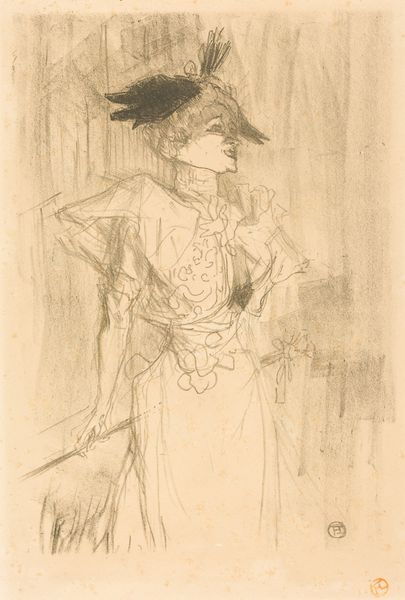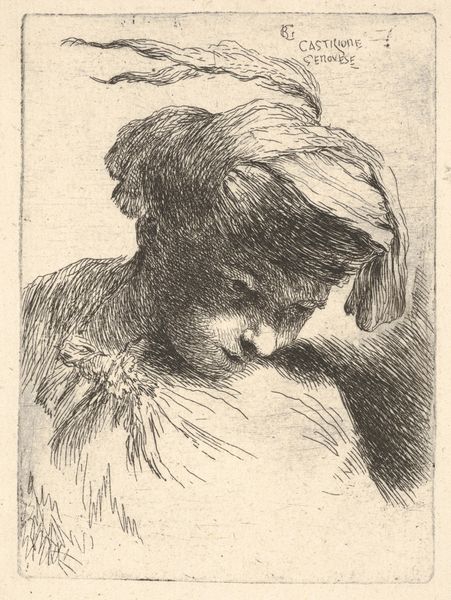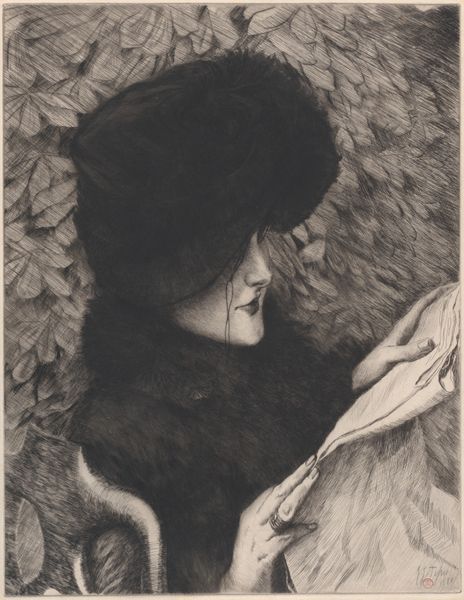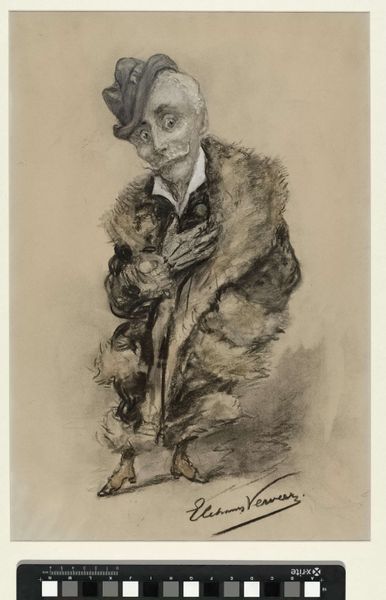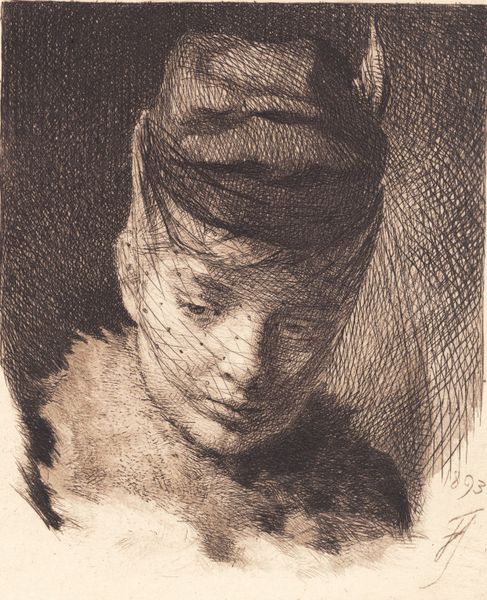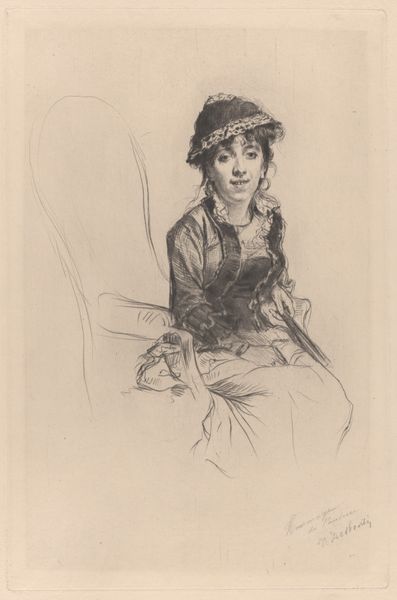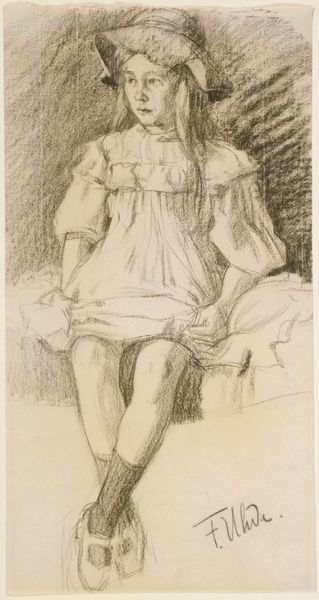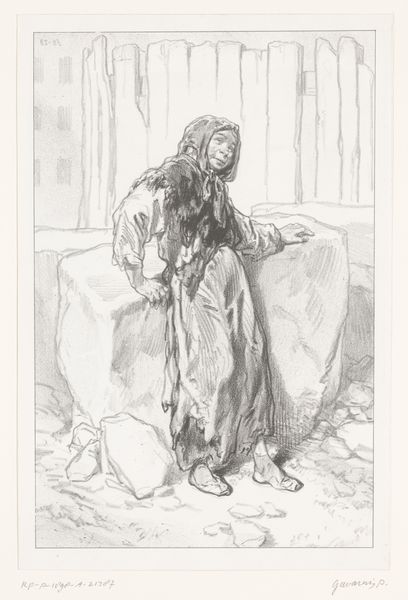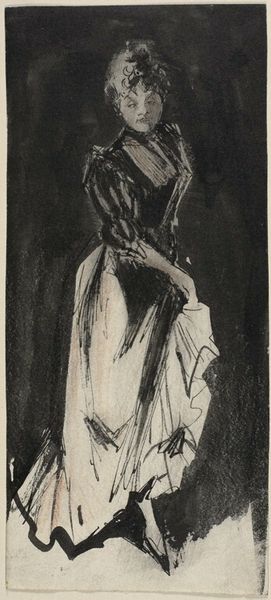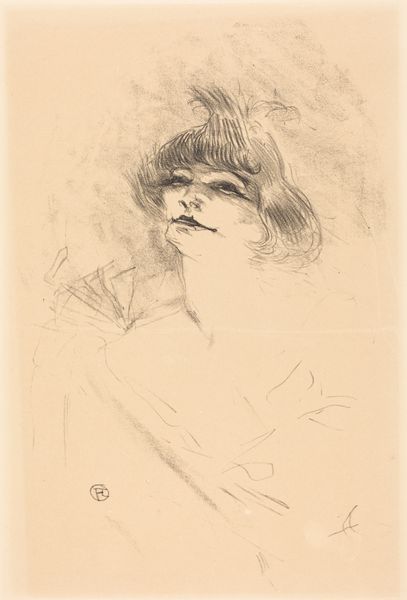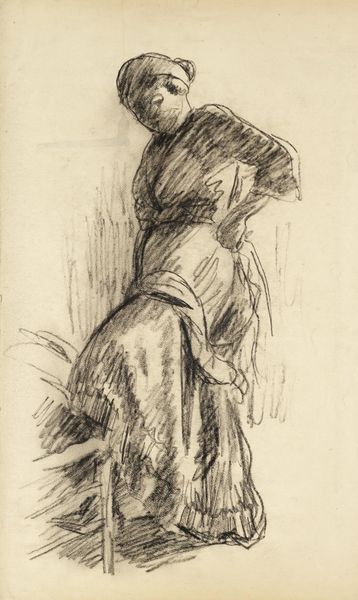
drawing, print, etching
#
portrait
#
drawing
# print
#
impressionism
#
etching
#
realism
Dimensions: Plate: 14 3/16 × 11 1/8 in. (36 × 28.2 cm) Sheet: 22 1/16 × 14 3/4 in. (56 × 37.5 cm)
Copyright: Public Domain
Curator: This is James Tissot's "Berthe," an etching made in 1883. There's such a compelling stillness to her posture and expression. What stands out to you initially? Editor: Melancholy, definitely. There's a quiet introspection, almost boredom, in her eyes. I'm immediately drawn to the details in her attire – the ruffles, the textures, they hint at a specific class and social sphere. Curator: Yes, the attire is quite remarkable! Etching allows for a very fine level of detail, look at how Tissot captured the fabric and lace. We can consider the role of clothing as a marker of social identity. This etching gives us a direct look at the fashions and social expectations of the time. Editor: Absolutely. It’s more than just fashion, it’s a constraint. How much of her internal state is shaped, perhaps even limited, by those societal expectations reflected in what she wears? Was this about expressing the constraints put upon women in this era? I imagine she must remain composed and beautiful. Curator: The process of creating the etching itself offers insight. Think of the skilled labor required to achieve such precision, a real mastery of the medium. How the labor practices inherent in the printmaking process were valued? Tissot, catering to a market for collectible prints. He uses etching in such a delicate way. Editor: You’re right to highlight the technical skill. Considering Tissot's other works, it also underscores his engagement with representing women in various social roles within the emerging consumer culture. This wasn’t just about showcasing beauty, it’s tied to shifting societal dynamics and new forms of self-presentation. The use of the printing process made the work available for the masses. Curator: And if we analyze how that print circulated, we learn a great deal about art markets and the democratization of images in that period. Editor: Looking closely, the lines creating the image seem fragile, which almost amplifies her vulnerability. There’s tension between her opulent dress and her emotional posture. It’s compelling to interpret this work by examining its representation of female identity within those specific conditions. Curator: Indeed, considering both the process of its making and its social context gives a deeper perspective on this quietly powerful work. Editor: Yes, it reveals the hidden labor of both artist and subject and questions the aesthetic conventions of the era.
Comments
No comments
Be the first to comment and join the conversation on the ultimate creative platform.
